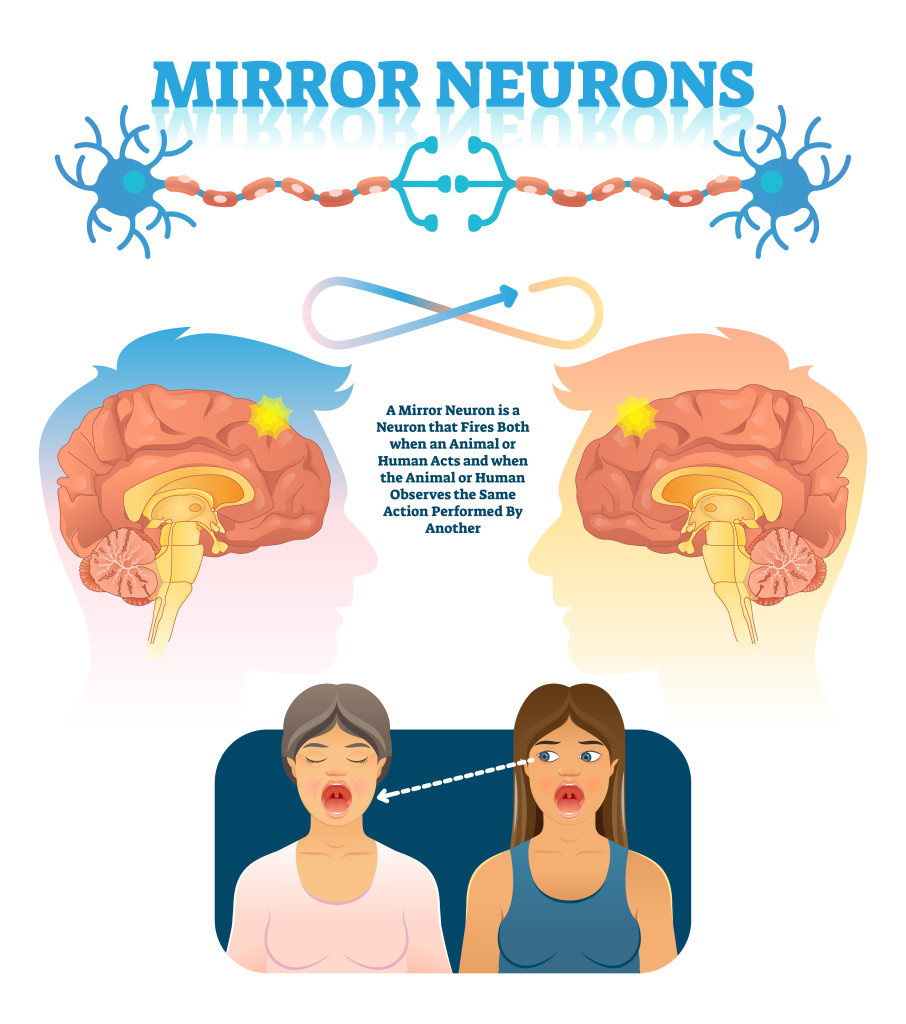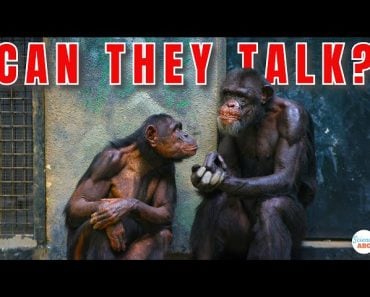Table of Contents (click to expand)
When you hear someone sing, the mirror neurons in certain areas of your brain fire up. Those same neurons also fire up when you perform the act of singing yourself.
You’ll often see people singing along to the lyrics of songs they know at parties and concerts. In fact, you’ve likely found yourself joining in when you hear a co-worker or friend singing a song you know. Even if you’re not the type to belt out a song in public, chances are good that you’ve hummed along to tunes under your breath.
It happens mindlessly, practically unconsciously. You didn’t plan to sing, and probably didn’t even realize when you joined in. Such is the unique quality of music. It is both effortless and spontaneous. You don’t need to be talented or good at it to enjoy it. Singing seems to have a magical power over us, making us want to bust out our vocal skills and let our hair down.
But why is that the case for humans? Is it just because we love the feeling of singing? Or is there something deeper going on in our brains and bodies?
Well, before we explore our urge to “sing along”, let’s first dive in and find out what makes us want to “sing” in the first place.
Recommended Video for you:
Why Do We Sing?
It turns out that singing is actually a pretty big deal for our species. It often marks the most important moments in our life: worshipping rituals, weddings, birthdays and funerals. We find ourselves singing in the shower, while driving in the car, or even in an exam hall when our mind goes entirely blank. There’s a good reason that “Happy Birthday” is a song and not a poem. The reason is simple… we LOVE to sing.
We love how singing makes us feel. Using our vocal cords in that way has been linked to the release of feel-good hormones like endorphins and oxytocin, which can reduce stress levels and promote feelings of trust.

The love runs deep too. Singing may have evolved to unite our growing social groups by communicating and evoking powerful emotions. You can also attract potential mates with such an alluring skill (just think of the sexy guitarists at every party). Who needs cheesy pickup lines when you’ve got singing skills, right? In fact, it’s possible that singing was used as a means of wooing partners before language even came into the picture.
Basically, it’s no wonder that we love to sing, but what happens when we hear someone else singing?
What Happens In The Brain When We Hear Someone Sing?
Singing is basically the same as making music with instruments, like the drums or guitar. Only with singing, the instrument is your vocal cords. Singing also requires a sequence of well-coordinated motor acts that produce physical vibrations of sound. These vibrations are perceived as auditory information that activates several areas in the brain, which then work together to process and interpret that information.
A key part of interpretation involves understanding the intent behind an action. To understand this “intent”, the brain has a system in place known as the mirror neuron system.
Mirror neurons are brain cells, and their name literally indicates their role in the brain. They create a neural mirror image of an action in the brain.
Mirror neurons work like this. They get activated both when you do an action and when you see someone else doing that same action. Your brain creates a “copy” of that action in the same brain parts that would have been employed if you were doing it yourself. It’s like your brain is making a pretend version of the action by watching it: a neural mirror image.

When you hear someone sing, the mirror neurons in certain areas of your brain fire up. Those same neurons also fire up when you perform the act of singing yourself. This process is subconscious and automatic, and it enables you to experience the emotion and intent behind the voice you’re listening to by allowing you to walk in the singer’s shoes.
The mirror neuron system plays a huge role in giving music its ability to effortlessly convey emotions and meanings. Therefore, just as a language translator can help you understand a different language, the mirror neuron system acts as a neural translator that helps you interpret actions and intentions.
In addition to conveying and interpreting one’s true intent, this system also triggers our urge to sing along.
How Do Mirror Neurons Define The Urge To Sing Along?
The human mirror neuron system is sensitive to motor, visual and auditory stimuli.
While singing, the singer engages their vocal cords, which establishes a motor network in their brain. This motor network is composed of the parts of the brain that link to the muscles required for a given movement, like the muscles required to sing.
When your singing is heard by someone, that person’s mirror neurons will activate a similar motor network in their brain. This network will likely trigger the listener to engage their own vocal cords and sing along.

We share this urge for singing with other animals. For example, in swamp sparrows, a type of song bird, mirror neurons are thought to play a role in song learning. A study showed that the HVC (high vocal center) area in the brains of these birds have neurons that fire both when the bird is singing the song, as well as when it is listening to the recording of its own song. In fact, while the bird is listening to the recording, the bird will start to sing, indicating the activation of the mirror neuron system.
The question that arises is… what evolutionary advantage does the human brain gain from promoting the behavior of singing along?
Singing Alone Vs Singing Along: Role Of Evolution And Culture
There are many advantages to singing, but are there any benefits to singing along or singing in groups?
While singing in front of the mirror into an imaginary microphone can be a fun and confidence-boosting activity, singing together in groups has other benefits too. According to some experts, humans could sing even before we could talk. Early humans experimented with their voice by mimicking the sounds of nature and wildlife. As a group, they used synchronized rhythmic sounds to deflect predators’ attacks.
Producing music or sound as a group didn’t just help them survive in times of danger, it was also something that brought them together as a group in the first place. Early humans were hunters and gatherers, so singing in those times made for a fun group activity that would keep the group solid. Singing together or choral singing did not just sync their moods, but also their hearts. Therefore, while singing alone may have served the evolutionary purpose of attracting mates, singing together evolved to benefit social bonding and promote harmony.

Culturally speaking, every meaningful event on our calendars calls for some good old group singing. Whether it’s joyfully singing Christmas carols or butchering a happy birthday song, singing together helps us share our feelings as a team. It’s like the secret sauce that brings together massive groups of strangers, forging bonds that last a lifetime. No wonder it has birthed fan bases like the Beliebers, Swifties, and Milers. When we gather at clubs or concerts to sing our hearts out, we create a magical community that’s all about sharing love and good vibes.
Now, you may wonder why singing together is still relevant in modern times, where physical gatherings have become less frequent. While it may not be necessary for our immediate survival, singing together still holds immense value for our society. It has been a part of our culture for years and is often present in even the most mundane aspects of our daily lives.
Be it in church, school morning assemblies, places of socializing, or even night clubs and pop concerts, singing together has always been a way for people to connect on a deeper level. It creates a sense of unified identity and promotes cooperation in a society. It is a key element in patriotic gatherings and promotes feelings of nationalism in times of conflict and war, thereby imparting strength to a nation’s people. When people sing together, they are working towards a common goal, which can be a powerful bonding experience, even if that goal is simply to stay in tune!
So, the next time you have the opportunity to join in on a karaoke night, don’t hesitate! Don’t be afraid to let yourself loose. You never know who you might end up connecting with through the magical power of music!
References (click to expand)
- J Kang. (2018) A Review of the Physiological Effects and Mechanisms .... Journal of Voice
- HURON, D. (2001, June). Is Music an Evolutionary Adaptation?. Annals of the New York Academy of Sciences. Wiley.
- Molnar-Szakacs, I., & Overy, K. (2006, November 3). Music and mirror neurons: from motion to ’e’motion. Social Cognitive and Affective Neuroscience. Oxford University Press (OUP).
- Acharya, S., & Shukla, S. (2012). Mirror neurons: Enigma of the metaphysical modular brain. Journal of Natural Science, Biology and Medicine. EManuscript Technologies.
- Le Bel, R. M., Pineda, J. A., & Sharma, A. (2009, July). Motor–auditory–visual integration: The role of the human mirror neuron system in communication and communication disorders. Journal of Communication Disorders. Elsevier BV.
- Welberg, L. (2008, March). Singing in the brain. Nature Reviews Neuroscience. Springer Science and Business Media LLC.
- Why do we sing? - ABC Classic. Australian Broadcasting Corporation
- Why do we sing?. classical-music.uk
- Ruiz-Blais, S., Orini, M., & Chew, E. (2020). Heart rate variability synchronizes when non-experts vocalize together. Frontiers in Physiology, 11, 762.
- A Pawley. (2012) THE SCIENCE OF SINGING ALONG. JSTOR













